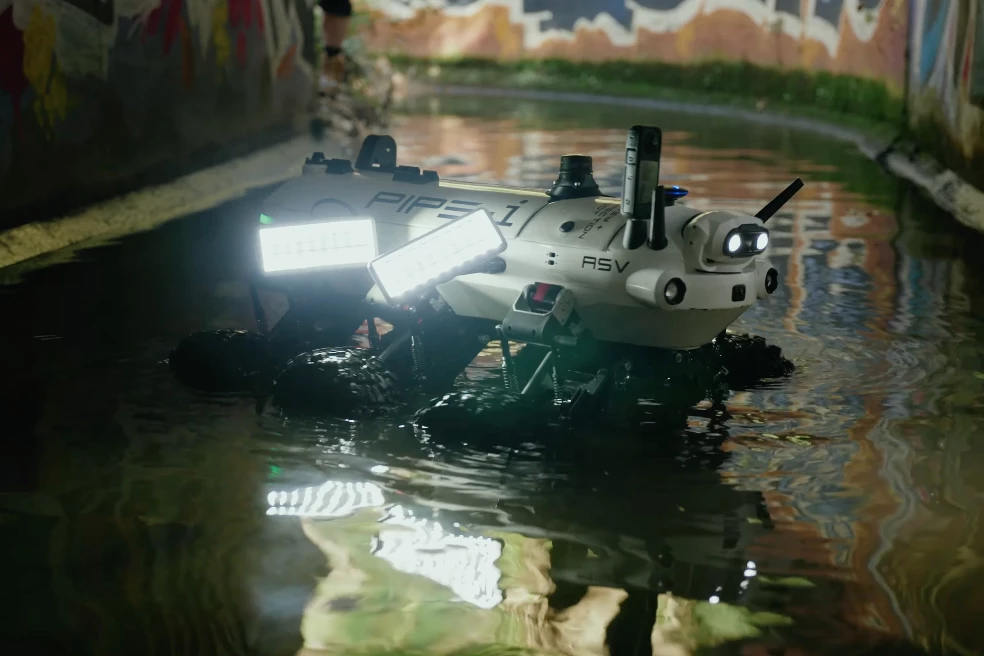Stormwater culverts can be dangerous places, due to hazards such as crumbling concrete ceilings, submerged obstacles, and toxic gas accumulations. The PIPE-i robot was designed with that fact in mind, as it takes the place of a human when inspecting such structures.
Created by New Zealand engineering firm Beca, PIPE-i was developed over a one-year period from June 2022 to June 2023.
Its creation was initiated when structural engineers from the company were tasked with surveying a severely cracked and deformed culvert under a busy highway. After finding that no commercially available options could adequately explore that culvert for them, the engineers proceeded to build a robot of their own.

The resulting prototype features a 3D-printed polycarbonate/carbon fiber body, six individually suspended wheels, four 850-lumen LED panels, a pan/tilt forward-facing camera, a LiDAR sensor, plus a Leica BLK360 3D scanner. That scanner stays protected inside the lidded back of the PIPE-i when not needed, then flips up to scan its surroundings as required.
The current version of the robot is radio-controlled in real time using a live feed from its camera, although it can perform some functions (such as proximity sensing) autonomously. Plans call for the final commercial model to use AI algorithms for increased autonomy.

While users can check the PIPE-i's video for culvert problems right as they're operating the bot, they're also able to subsequently analyze a 3D point cloud model of the culvert created via the onboard scanner. The robot can additionally be equipped with an omnidirectional camera for shooting 360-degree video.
And as an added bonus, the PIPE-i's adjustable suspension allows it to ride high for optimum scanning, but also drop down for squeezing underneath overhead obstacles.
Beca's Marcus Hall, who is leading the development of the robot, demonstrates its functions in the video below.
Source: Beca





